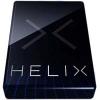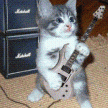Leaderboard
Popular Content
Showing content with the highest reputation on 07/20/2020 in all areas
-
Hi, I just wanted to post a thread that explains the actual reason why FRFR, PA, and studio monitor speakers typically still require treble cut to avoid sounding fizzy with distortion or overdrive on a guitar tone. THE COMMON PROBLEM I've read through some of the threads on this topic, and while I saw one person post the correct explanation (Without getting the credit or kudos he deserved for it, from what I saw), most people state the problem is that the user is not understanding the difference between guitar speakers and FRFR speakers. I believe users aren't that naive - and many good comparisons exist where users get great sound from helix (without virtual cab) into power amp into real cab, or other ... simpler..... modeller brand (with only virtual cab) directly into FRFR. However most of those "it's simple - guitar speakers have less treble, so you need to cut treble on FRFR" explanations go on to incorrectly state that the problem is that guitar cabs cut the treble a lot because they aren't flat, where as FRFR speakers are, at least in theory, outputting a flat response - therefore putting out much more volume at high frequencies than guitar cabs do. I mean, yes, that is true ... but NO that is not the problem. Again, the scenario is that we ALREADY have a virtual cab or IR in our signal chain - so shouldn't the high frequencies already be cut? Shouldn't the FRFR speaker just output exactly what that virtual cab sounds like, with the already good sounding treble cut baked into the virtual cab since it's a copy of a real cab??? (The end user, and you here, are asking this.... :-) ) Folks state that you need to think like a recording or mixing engineer, not like a guitarist - which is absolutely correct. But stating that with FRFR speakers you need to cut treble because it is brighter than a guitar cab is not logical, nor correct, since the scenarios being discussed invariably have either a virtual guitar cab already in the signal chain, or a cab IR. Since we have a virtual cab in a block, we already HAVE that high cut, so the statement is not correct - not in the simple way most folks tell it on this forum, at least. There is more to it.... The common problem from nearly everybody using a helix is with the end users who are experiencing fizz through FRFR, and questioning why, considering they are using a virtual cab or cab IR which is emulating the sound of the cab. WHAT A VIRTUAL CAB OR IR IS ACTUALLY REPRODUCING The simple description of the problem is that it's NOT emulating the sound of the cab FROM a position that a guitarist would be playing and listening to the tone. The facts of why the virtual cab, or many of the cab IRs available, are NOT sufficient to sound like a cab in a room are with how the virtual cab or cab IR were miked up: - In a virtual cab, and in many cab IRS, the cab was, more or less, close miked, in one mix position, on one part of one cone. That is how many cabs are miked in the studio and live... but is NOT how you get the sound you hear as a guitarist when playing through your amp. IT IS a MUCH brighter tone, and much LESS COMPLEX than the sound of a real cab in a room. The virtual cabs or many of the cab IRs are miked this way for various reasons - technical reasons (CAB IR files aren't really designed to handle the long recording of room reflections and short plate reverb that your cab in a room would require)..... and removing early reflections as much as possible by close miking in a dead room allows you, the player, to configure the rest of the tone after the close miked speaker on the cab - you can eq to mimick various rooms, you can add room or plate verb for the same reason.... etc. You might think... "Ok, so because the guitar cab is close miked, it is much brighter and fizzier, right? like how if I put my ear to it and play quietly with a distortion pedal, it sounds bad.... that's your point? So Why can't I just put my FRFR speaker where my guitar cab would normally go and play and have it sound the same, since it's playing back the exact sound of a guitar speaker in that location, and the room and angle should take care of everything else?" Well, folks, that is an EXCELLENT grasp on the close miked speaker sound, yes it's much brighter and fizzier, but it is missing a couple of important points about the "amp in the room" sound when playing through an FRFR or PA. 1) the FRFR or PA probably has FAR better high frequency dispersion than your guitar speaker, up high, and you always hear the on axis tone (IE: the virtual cab sounds like a close miked speaker, so you get that sound everwhere in front of the FRFR without it changing with direction or distance in the way a real guitar cab does). So where every you stand, relative to your FRFR speaker, it's like having your guitar cab aimed right at, and next to, your ears. 2) the close miked virtual cab response or IR response is on one part of the cone and miked from one direction... it is one aspect of the tone. Dust cap, edge, OR middle of cone, on axis OR off axis, at a specific distance. 3) No matter how bright each guitar speaker on it's own sounds, in a cab with more than one speaker there remains much less high frequency sound once you're a certain distance away from it - due to physics of how multiple speaker outputs work together for dispersion, etc. The real sound from the cab as you hear it is a mix of many radically different tones coming from various parts of the guitar speaker. Guitar speakers are not rigid cones, normally, and the dust cap, edge, middle of the cone, and other areas can truly sound quite different, as can on axis versus off axis tones. This is why some of the best CAB IR libraries include multi miked files... it's sort of a pre-mixed cab IR that actually sound sound much more like the blend you get from a real cab when you play back through an FRFR or PA. A guitar cab with more than one speaker is extra difficult to reproduce when single miked as a cab IR or virtual cab - because the tone in the room is a wild, chaotic mix of the multitude of EQs and tones you get from the cab, all interestingly blended together. So, a MIX engineer in a studio will be accustomed to taking that fizzy close miked amp recording and EQing it accordingly to make it sound great through studio monitors, which are truly FRFR (and likely the only TRULY FRFR speakers you will ever encounter, since they are typically EQed to be as neutral, or flat as possible, in that control room. AT least ONE set of their monitors should be like that, anyhow, in a big studio. They probably mix on something like NS7s though, or other similarly bright and revealing speakers, which also reminds the engineer to cut back on high frequencies and remove the fizz. So yes, think like an engineer, but for the right reasons, and with a little tiny bit more of the full picture than you had before. Saying that guitar cabs aren't as bright as FRFR as a reason to cut treble is simply wrong, since we all know we're placing a virtual guitar cab that, one would ASSUME, must have that same high cut in our signal path. It's actually because our virtual cabs, and some cab IRs, contain much more high frequencies than you actually hear from the real cab when standing and playing... and an FRFR or PA speaker will not result in the same high cut in a room as the actual cab would, due to physical design differences between the transducers and the layout of the speakers. Basically, the original cab IR or virtual cab was probably not setup as a mic in a room standing where a guitarist stands while playing.... it is probably a MUCH brighter recording that isn't anything like how you normally hear your cab... but is great for a studio MIX engineer to work with. SO YOU STILL NEED TREBLE CUT, EVEN WITH A VIRTUAL CAB, or with MANY IRs (but maybe not all IRs) Rest assured - if you have a virtual cab, you still need treble cut (at the very least) after a helix virtual cab or many of the cab IRs you can buy to sound anything like a real cab when you connect your helix directly to a TRUE FRFR cab or to a PA... and honestly you probably need a bit of plate reverb and possibly some low end cut also to really get you there. But what DOES a virtual cab or cab IR do for you? it gets you the true EQ of that cab, in a common, popular recorded microphone position for studio use. Just cut 8kHz, more or less, and up from there, ... probably rather dramatically, and it will start to sound similar to a good cab.....but use your ears, choose eq how you like it. Or, look for an IR library that is a producer blend of mic positions and /or room sound in one cab IR - and you will probably find that you love that sound. Another minor footnote - FRFR cabs you can buy for modelers are not particularly flat response or full range, but they are MUCH more so than most guitar cabs. A PA is often hotter in the highs than a real FRFR speaker is. A REAL FRFR can likely only be found in some recording studios, and even then might not be the speakers chosen by the engineer to work with... for reasons I won't get into here.3 points
-
Not only is that dude running Ownhammer and L6, but he's also a Freemason... the guitar modeling crowd has been selected as the first domino to fall in the NWO's quest for world domination. But pay no attention to that buzzing sensation in your molars whenever your Helix is turned on... "They" are everywhere, and can't be stopped.2 points
-
Hi, this is a little DIY project I built: It's a small Arduino based two button MIDI foot switch for the Helix HX Stomp. It is more flexible and more powerful than the "normal" foot switches connected via TRS cable and as a bonus you can still use an expression pedal hooked up to your HX Stomp. The MIDI Muppet HX can scroll through presets (normal mode) scroll through snapshots (snapshot mode) act as FS4/FS5 (fs mode) bring up the tuner (in any mode) To cycle through modes, press and hold the right (up) switch. To toggle the tuner, press and hold the left (dn) switch. If this is something you are interested in building please check out more information at https://github.com/mattzzw/midi_muppet_hx_2btn Other ideas are integrating tap tempo, looper control, ... Feedback and ideas are welcome! Cheers, /Matthias1 point
-
I have read countless threads on the subject and it seems to me that all anyone can say is "Maybe". Some people say they got it to work because they upgraded from Windows 8 where the TonePort worked. Others say they got it to work by basically "jiggling wires" in terms of disabling and re-enabling the device in device manager. Some say it "did" work and then stopped. This is a huge mess of answers. Can anyone say without a doubt. Yes or No? I have tried everything to get my TonePort UX2 Red to work under Windows 10. With the latest Windows 10 drivers. The device is so simple to use. Install the drivers, and plug it in. Not a lot of technical stuff to do. Under Windows 8 on my laptop, that is exactly what I can do. Under Windows 10, the TonePort is just plain dead. The device manager sees it but it is banged out. I have to disable the device and re-enable it. Then there is no bang on the hardware in device manager but it still doesn't work. The needles on the front don't even move. I know Windows sees something is there as the unit blinks it's red lights at me like crazy until I install the drivers. Then the red lights stop and it just stares at me dead. I have done all the line 6 monkey stuff, which is just a mess. Using Monkey to install drivers or manually doesn't help. Plus Monkey will not let me download PodFarm.. it only lists PodFarm 2.5 which I don't own. Yet even in trial mode that didn't work. So here I am. I have no choice but to change computers and the only OS on these computers is Windows 10. Am I just screwed? I have a great piece of hardware that works fine on outdated OSes.1 point
-
I've been reading a lot of posts both here and on other forums that suggest some folk are expecting to plug in Pod Go and that it will sound incredible right off the bat but are bitterly disappointed when it doesn't and then considering returning it or other gear that they bought to use with it. The expectation probably isn't helped by both the marketing and some of the videos suggesting you can take Pod Go straight to a rehearsal or a gig straight out the box. Of course you can, but I'd suggest it's unlikely you're going to be completely happy with it. But regardless that it's called Pod Go, be under no illusion - to get the best from it, this is NOT a plug and play mfx unit. There is a lot going on under the hood and even if you are used to modeling gear it will take you a while to get your head around it. Everyone's ears, guitars, music styles, gear, headphones etc are all entirely different. So whilst there might be those whose minds have been blown from the moment they plug in, for most of us mere mortals Pod Go needs some study (yes - RTFM! lol) and some time to figure out how to use it. But with just a little perseverance your time invested will reap wonders. I was the same - when I first switched on Pod Go I was decidedly underwhelmed and thought I'd made a big mistake as I couldn't get anywhere near the tone and feel of my Vox Tonelab SE (or LE). Firstly, don't be put off by the factory patches - these are there to give you ideas as to what Pod Go can do and were put together with very specific gear. But aside from a handful of 'promising' ones (and it's the same with all mfx units) these probably won't sound great straight out of the box because your gear will be different to what Line 6 used to design the patches. So, you're likely better off learning to build a patch from scratch first - & there's loads of videos to help you with this on You-tube. There are three big themes that can make the world of difference to hearing a dull lifeless patch, and your mind being blown! 1. Learning about EQ - not just the settings, but the different types of EQ, and where you put the EQ block. Move the EQ to the end of the signal chain and hear the difference! That's not to say it's always best there but it will demonstrate the point. I can't stress enough how important EQ is. When you hear differences on Youtube between two MFX units being compared, the vast majority of the differences you hear is not due to the basic amp and FX modeling - it's to do with EQ and FX chain order. And a flaw of these videos is that they try to set the 'same' amp model up in the same way eg 12 noon. But it's nonsense because the real life JCM800 and 4x12 greenback cab used by manufacturers to create the digital model will be completely different to each other and so the sweet spots and EQ will be different too. 2. FX order as above, but ditto reverbs and delays. placing a spring reverb in-between the amp and cab can make a huge difference. 3. Adjusting the dB settings on eg, cabs, EQ, the main Pod Go out etc - the difference can be staggering And that's before you start thinking about fx loops and 4 cable method, and differences between single coil & humbuckers, and getting to know which delays, reverbs and other effects you prefer etc. So is it any wonder the factory settings aren't going to be a good fit for most people without at least some tweaking. But once you've got your head around those building blocks then you will really start to enjoy your Pod Go. However if you don't have the prior experience or patience or willingness to invest some time and just want a plug 'n play mfx, then my advice is do not buy ANY of the new style modeling mfx units (be it Mooer, Line 6, Zoom, Boss etc) because the same principles will still apply to all of them. Stick with a conventional amp and pedalboard or an FX only unit such as the Helix FX, or an older tech unit like the Vox Tonelab LE etc. MFX like the Pod Go are not for everyone. They are simply tools to use. But for those who might think the Pod Go (and other similar pedals) sound like pooh, the reality is that they haven't set it up right because it is absolutely capable of sounding and feeling really good - maybe not exactly the same as a real tube amp, but very close. What would I know? Well. I'm nothing special, I'm not a sound engineer or studio buff, I'm no guitar virtuoso and just a (hopefully) decent amateur 'meat & potato's' player who plays a fairly wide range of styles (classic rock, blues, jazz, country, funk, acoustic, bottle neck etc - jack of all trades, master of none). But I've been playing & gigging now (mainly smaller venues but in my youth did the university circuit and played at the odd better known venue) ) for the best part of 50 years. The first half was using what now would be considered vintage amps including Vox AC30, Fender blackface/Silverface 2x12 dual reverbs, Selmer Zodiac MkII, Marshall JTM45, JCM800, 50/100w Plexis, 18w '1958' mini-bluesbreaker , Sound City, Orange etc with stomp pedals and even some solid-state amp (JC120, HH 100w). Most of the second half was using digital gear including Line 6 Flextone II Plus Boss GT3/5/6/10, Yamaha GW33, Zoom G5, G5n, Vox Valvetronix AD120VTX etc, & (borrowed/used) Line 6 Vetta II, H&K Zentera, Boss GT100. So I think it's fair to say I have a reasonable breadth of experience with both traditional & modeling gear - and so when I say that the Pod Go is a stonking bit of kit, capable of some great tones, I hope it puts into perspective that I'm not inexperienced as to what good tone sounds like. So if you've just bought a Pod Go and are thinking it's not very good and want to return it - do yourself a favour and don't dump it too quickly. Watch videos on setting it up, experiment with the 3 biggies above, and build a patch or two from scratch first. And even though I'm pretty experienced with modeling gear, it was (and still is) a learning curve for me too. It's not perfect, but then nothing ever is - but it's a really, really good mfx unit and the modeling quality, particularly at this price point, is genuinely very, very good indeed. I'm having a lot of fun with it, and looking forward to gigging with it. There's a few bugs, but I'm confident Line 6 will sort it. Only thing I don't like is the PSU - the cable is too short, too thin, and it needs something a bit more robust for gigging so I'll have to get myself a back-up once gigging is back on the menu.1 point
-
I might be the one who proposed this a while back. Basically a mic’d guitar amp will sound just like putting your ear up to that cone, not a pleasant experience. But it gets something the mix or live sound engineer can work with. It easier to cut too much highs then it is to create them if they’re not there. A typical FRFR will have a lot wider dispersion than a guitar speaker which tends to put the highs out into a very narrow cylinder. That’s why a FRFR doesn’t sound like a guitar amp in the room - because it isn’t. So we adjust to account for the fact that the brightness picked up by the mic used to create the IR is heard over a wider area.1 point
-
Correct 4 cable method scheme: set the mix to 100% and make sure the FX LOOP block in the POD chain is turned on.. probably your JCM 2000 has a parallel type of FX LOOP controlled by a MASTER FX MIX control.. the parallel type FX LOOPS used as such (ie with the MASTER FX MIX control set somewhere between the min and max settings) are useful when you need to put some separate FXs like delay or reverbs stomp boxes set totally wet in the amp FX LOOP and use the MASTER FX MIX control to balance the wet signal with the amps direct signal.. but in a 4CM configuration it would be better to set the MASTER FX MIX control on full/max, doing so the amp FX LOOP would work as a standard serial (instead of parallel) FX LOOP more suited in this case. _______________________________________________________________________________________________________________________________________________________________________ All about POD HD500/X help and useful tips1 point
-
As has been stated before, there is no possible way of knowing it will go bad. Therefore if you want to be SURE then upgrade it to the Helix floor which has had zero defects on the pedal. That's the only option I know of. And quite frankly if you're on "tour" you need the more robust enclosure of the Helix floor anyway. I would never tour with an LT. It's just too lightweight as far as construction.1 point
-
well, there is another reason this wouldn't work. It would be WAY too easy to hit the wrong pedal and mute your whole sound during a song. That would not fly during a live performance at all.1 point
-
arislaf,... and I take it you remembered not to "over-normalize' the amplitudes. I recall you were good about that.1 point
-
You don't actually have a problem yet... you're just anticipating one...and there's no possible way for anyone to predict whether or not the pedal is going to break. Even if it does, it will be covered under warranty, so it's a moot point. Just use the thing and don't lose any sleep over it, because there's nothing preemptive that you can do anyway. It'll either break or it won't. As for the firmware... just because you buy something today, doesn't mean that it hasn't been sitting around in somebody's stockroom or warehouse for 3 years. That's retail... it happens all the time.1 point
-
Pretty much any would likely do the trick as cabinets aren't designed specifically for clean/dirty...although some do better with cleans than others. Vox and Fender cabinets come to mind in that regard as do Hiwatt Fane speakers as well as JC120 Roland 12s.1 point
-
A couple of other notes here: I think you need to get a new perspective, your stage speaker whether it's a 108 or the 112 would easily fill the space you're talking about. In a live environment you generally won't be depending on your stage speaker to fill the audience space. That's what a PA is for. The LAST thing in the world you'd want to do is try to mic a powered speaker as you'd totally negate the value of the speaker and it would sound like crap through the PA. Remember, the sound you're producing from the Helix is the sound of a amp through a mic'd cabinet, so you don't want to add layers to that with yet another mic of the speaker which is producing an accurate representation of the mic'd cabinet from the Helix. Generally you would do what HonestOpinion said and feed a direct XLR line to the board whether that be from the speaker or from the Helix. Your stage speaker only needs to be loud enough to fill the stage if you're using a PA. In fact, the more anyone in the group breaks that rule the harder it will be for the sound guy to get a good mix of the band for the audience. There are plenty of folks using 108's and lots using 112's, so either would likely work. However bear in mind that a LOT of people have problems with these speakers sounding boomy from too much low end when placed on the floor due to an acoustic artifact known as "bass coupling". You can correct this by putting the speaker on a pole, or you can choose to go to a higher end and more professional speaker which has DSP contouring adjustments to correct for such things. What you should NEVER do is try and correct for that boominess by adjusting the Helix as that adjustment would mess up the sound for the front speakers on the PA also. Granted, the Headrush has a low price, but you get what you pay for.1 point
-
Thanks, @datacommando! I've been on Catalina since it launched and hadn't seen a dialog like that before. For posterity, this is what I did to fix it: Open the .pkg file to get the error dialog Open System Preferences > Security & Privacy > General tab, then click the "Open anyway" button Another warning dialog appears; click "OK" The installer should then open1 point
-
Should you do a global reset after the update? Good question! The update notes do not require it for the 2.92 firmware, so at least according to Line6 the answer is "no". You do however need to do a backup and restore according to the 2.92 notes. Note: Phil_m a more than reliable source stated that he believed that the backup and restore was probably only required for the global settings which apparently could sometimes get wonky without this step performed after the 2.92 update. I did a full restore myself including my setlists, taking the Line6 update notes literally. In past updates the only way you could get the latest Factory and Template setlists was to do a global reset and then restore only your User setlists by unchecking the Factory and Template setlists in the "Restore From Backup" dialog. Yup, that option is in there although you may have to expand the setlists directory in the "Restore From Backup" dialog window to see it. I don't know if there is anything new in the 2.92 Factory and Template presets but if it there is, unless the new update process did it for you automatically, and that would be new to the process, I would imagine you would have to follow the old reset and restore procedure to get the latest and greatest. Not sure what if anything may have changed in the old process since the firmware update procedure switched over to working semi-automatically from within HX Edit rather than being done from the Updater. I don't believe HX Edit is updating itself to the latest version that matches the firmware, which you can now update directly from within HX Edit. Personally I downloaded and installed the "HX Edit 2.92" bundle manually just to be sure. At some point in the update process renovations hopefully HX Edit will update itself and the firmware, perhaps simultaneously along with Native, and become a fully mature install process. Yes you should and can safely uninstall the "Helix" app. If anything goes wrong just reinstall "HX Edit 2.92". Here is the link for the Helix reset options: https://helixhelp.com/manuals/helix/reset-options.html#helix-floor-lt1 point
-
Variax doesn't have the kind of functionality required to make that happen. It only sends audio from the guitar to the Helix, even over VDI.1 point
-
Hi Arislaf, I bought a JTV-59 two weeks ago from Ebay, but didn't recognise any of he patches on it, so I reflashed it to factory defaults. it didn't sound as good, and I was getting odd popping sounds, particularly when strings were plucked. Other people have had this problem and recommended reverting to 1.9, which I tried and was better. I then realised that what was loaded when I got it was your Realistic bundle, so I downloaded and installed, all is now well in the world again! What a fantastic job you have done, a real labour of love. A couple of things, do you have a list of all of the models that you could post that I could print off to have a hard copy? What guitars are your acoustic patches based on. Lastly, as a matter of interest, I play a bit of mandolin, not really a mandolin player, just a bit of Steve Earle, Copperhead Road etc. I've taken your bouzouki patch, muted the low E and A strings, and tuned the rest to standard guitar tuning D, G, B and E, I can the play passable mandolin things with normal guitar chords. Once again, many thanks for all your hard work.1 point
-
Thank you for testing and for your feedback. I didn't realize the voltages aren't necessarily in play here - which makes sense now that I think about it since it's a "short to sleeve" function. I setup the same patch as you did Codamedia - with a footswitch for tip and another for ring (attached). I then checked the continuity and the Ring shorts out but the tip does not. I also did a short video of my test which you can see below. This is very helpful and pretty straight forward for me to go back to Line 6 with. Thanks again! Edited to add I confirmed the cable is good as it rings out on both ends. I also get the same result with a different cable. @rd2rk - I don't have a response from you on my other thread - perhaps you're thinking of someone else? Here's the thread: Ext Amp Test.hlx1 point
-
When you're controlling the Powercab from the Helix with the L6 Link connection, you don't change presets on the Powercab. You just control all the settings in the Powercab in the Helix preset and/or snapshot. So if you want to select a different IR in the Powercab in a Helix preset, you select the User IR tab, like you said, and then select which IR you want using the parameter labeled "User IR [1+2]" in HX Edit. The IR number don't correspond to the Powercab presets. They correspond to the position of the IR in the library in Powercab Edit.1 point
-
I have a Helix LT...delighted with it. Occasionally, I need to run an Acoustic guitar with Vocals...as there's no MIC Input on the LT, decided to try a MIC to LINE Adapter. I got this one - https://www.gear4music.com/…/Audix-T50K-Impedance-Matc…/ST8… It works great ! I can plug my Dynamic Mic in via the RETURN 1 Input on the LT, made a patch with Dualpaths for Mic on Return 1 and Guitar on Return 2. With the Studio Preamp and some Compressors, and a bit of Gain boosting, I get a great clean Mic signal. My Patch as above is available on Customtone (free) at - https://line6.com/customtone/tone/4433419/1 point
-
1 point
-
This doesn't answer your question, but I'm running my vocals through path B on my HX using two methods. When we provide the PA, I use the channel insert on the PA and route it through the HX, using the Mic preamp on the mixer. When using a house PA, I use a separate Mic preamp (ART Tube Mic Preamp, which sounds great btw). Works great both ways!1 point
This leaderboard is set to Indiana - Indianapolis/GMT-04:00









